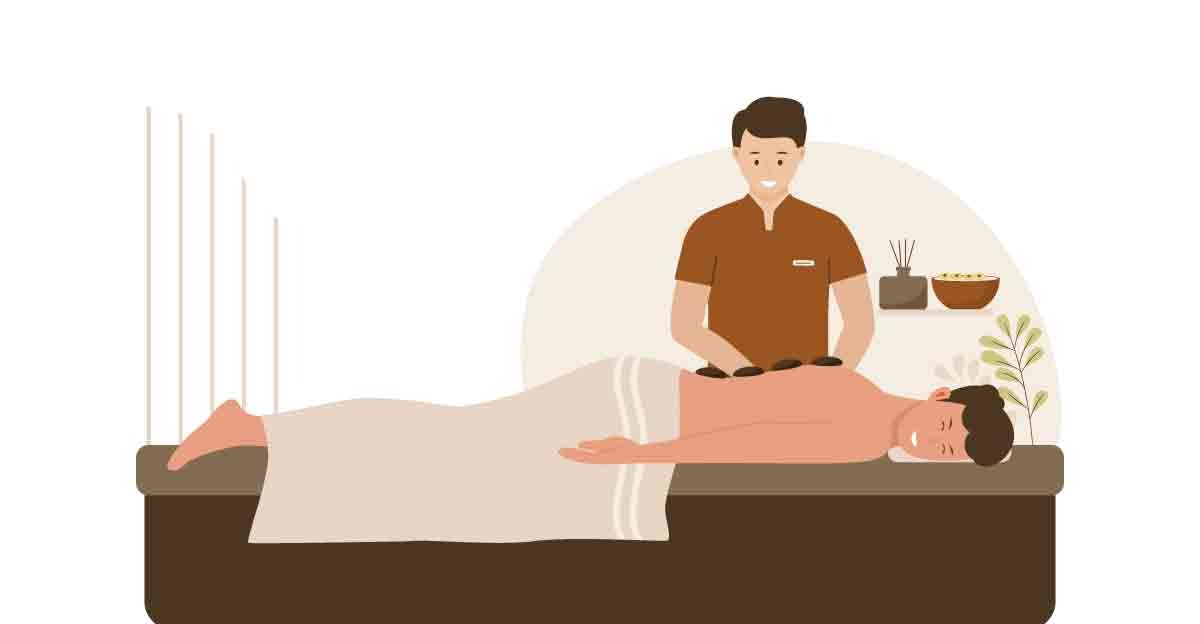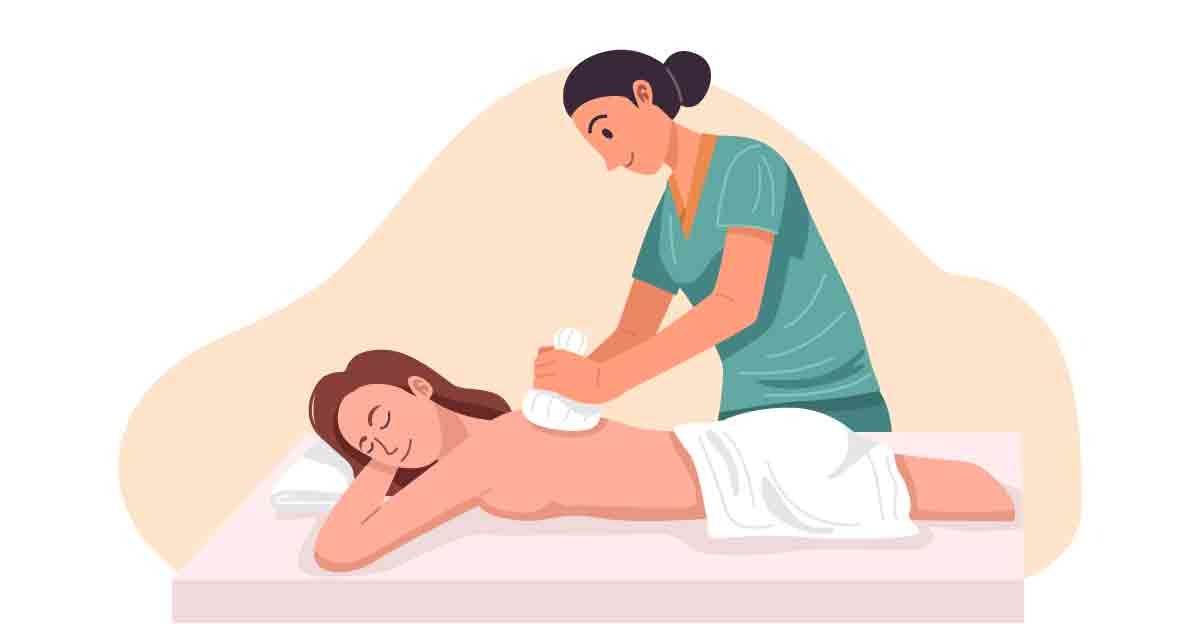Thai Dry Massage and the Role of Herbal Compresses
Imagine a therapeutic experience that not only rejuvenates your body but also takes you on a journey through centuries-old healing practices. Welcome to the world of Thai Dry Massage, a unique blend of ancient wisdom and modern wellness.
Historical Roots of Thai Massage Therapy
To truly understand the essence of Thai Dry Massage, let’s delve into its historical roots. Originating in ancient Thailand, this form of massage has been passed down through generations, embodying a holistic approach to well-being.

1. Ancient Wisdom in Modern Wellness:
Thai Dry Massage is not just a spa treatment; it’s a holistic approach to well-being that draws upon ancient wisdom. Rooted in traditional Thai medicine, this form of massage has been passed down through generations, preserving the secrets of the body-mind connection.
2. Historical Roots in Thai Culture:
Dating back over 2,500 years, Thai Massage is deeply intertwined with the cultural fabric of Thailand. Its origins are often credited to Shivago Komarpaj, a physician to the Buddha. The techniques and principles of Thai Massage were developed within Buddhist monasteries as a way to promote physical and spiritual well-being.
3. Blend of Techniques:
Thai Dry Massage is a unique blend of various techniques, including acupressure, yoga-like stretches, and energy balancing. Therapists use their hands, elbows, knees, and feet to apply pressure to specific points on the body, promoting the free flow of energy and releasing tension.
The Unique Approach of Thai Body Massage
Unlike conventional massages, Thai Body Massage involves a combination of acupressure, energy work, and assisted yoga postures. This unique approach aims not only to relieve physical tension but also to balance the body’s energy flow.
1. Acupressure:
At the core of Thai Body Massage is the application of acupressure, a technique rooted in traditional Chinese medicine. Therapists use their hands, fingers, and elbows to apply pressure to specific points along the body’s energy pathways, known as sen lines. This targeted pressure stimulates the flow of energy, releasing blockages and promoting a sense of balance.
2. Energy Work:
Thai Body Massage incorporates principles of energy work, acknowledging the vital life force that flows through the body. By focusing on the body’s energy, therapists seek to restore equilibrium and vitality. This holistic approach recognizes that physical tension often stems from imbalances in the body’s energy system.
3. Assisted Yoga Postures:
A distinctive feature of Thai Body Massage is the integration of assisted yoga postures. Clients are guided through a series of stretches and movements that resemble yoga poses. Therapists use their hands, elbows, and sometimes even their feet to gently manipulate the body into these postures. This not only enhances flexibility but also encourages the release of tension stored in muscles and joints.
Top Thai Massage Techniques
At the core of Thai Dry Massage is Nuad Bo-Rarn, an ancient art that focuses on rhythmic pressure and stretching. This top Thai massage technique forms the foundation of Thai massage therapy, promoting flexibility and muscle relaxation.
Herbal Compresses: Nature’s Therapeutic Embrace
One of the distinctive features of Thai Dry Massage is the use of herbal compresses. These compresses, filled with a blend of aromatic herbs, enhance the therapeutic benefits of the massage, providing a holistic healing experience.
The Art of Thai Dry Massage: Beyond the Physical
Thai Dry Massage transcends the physical realm, incorporating elements of mindfulness and spirituality. Practitioners often describe it as a meditative dance that fosters a profound connection between the body, mind, and soul.
1. Mindfulness in Motion:
At the heart of Thai Dry Massage is a sense of mindfulness in every motion. Practitioners approach the massage as a deliberate and focused practice, being fully present in each movement. This mindfulness not only enhances the therapeutic benefits but also turns the massage into a contemplative experience.
2. Meditative Dance:
The flowing and choreographed sequences of Thai Dry Massage create a dance-like quality. The therapist moves around the recipient, guiding the body through stretches and pressure points in a harmonious rhythm. This dance is not only therapeutic but also serves as a form of moving meditation, promoting a sense of calm and centeredness.
The Role of Essential Oils in Thai Body Massage
Thai body massage essential oils play a pivotal role in massage, elevating the sensory experience. From calming lavender to invigorating eucalyptus, the choice of oils enhances the therapeutic effects and adds an aromatic dimension to the massage.
1. Aromatherapy for Emotional Well-being:
Aromatherapy, the use of essential oils to promote holistic well-being, is seamlessly integrated into Thai Body Massage. The olfactory system, closely linked to emotions and memory, responds to the aromatic molecules released by essential oils. This enhances the emotional impact of the massage, contributing to a sense of calm, relaxation, and overall emotional well-being.
2. Calming Lavender:
Lavender essential oil is a popular choice in Thai Body Massage for its calming and soothing properties. Known for its ability to reduce stress and anxiety, lavender oil enhances the overall relaxation experience. Its gentle floral scent creates a serene atmosphere, promoting a tranquil state of mind.
Benefits of Thai Massage Therapy
1 Physical Rejuvenation
Thai Massage Therapy goes beyond relaxation, offering physical rejuvenation by improving blood circulation, flexibility, and muscle tone. It’s a holistic remedy for those seeking relief from chronic pain and stiffness.
2 Mental and Emotional Well-being
The mental and emotional benefits of Thai Body Massage are equally noteworthy. Stress reduction, improved mood, and enhanced mental clarity are just a few of the positive outcomes reported by regular recipients.
Choosing the Right Thai Massage Spa
Selecting the right spa for your Thai Dry Massage is crucial. Look for establishments with trained therapists, a serene ambiance, and a commitment to preserving the authenticity of traditional Thai massage techniques.

1. Trained and Certified Therapists:
A reputable Thai massage spa should employ therapists who are trained and certified in traditional Thai massage techniques. Look for establishments that prioritize ongoing education and skill development for their therapists. This ensures that you receive a message from professionals who understand the intricacies of Thai Dry Massage and can provide a therapeutic and authentic experience.
2. Commitment to Authenticity:
Choose a spa that is committed to preserving the authenticity of traditional Thai massage. This involves using traditional techniques, such as acupressure and assisted yoga postures, that have been passed down through generations. Avoid spas that dilute or Westernize the practice, and opt for those that respect and uphold the cultural and historical roots of Thai Dry Massage.
Tips for Maximizing the Benefits
Whether you’re a seasoned Thai massage enthusiast or a first-timer, these tips will help you make the most of your session. Stay hydrated, practice deep breathing, and allow yourself to surrender to the therapeutic touch.
1. Stay Hydrated:
Hydration is key to supporting the body’s natural detoxification processes. Drink plenty of water before and after your Thai massage to help flush out toxins released during the session. Proper hydration also aids in maintaining flexibility and preventing muscle soreness.
2. Communicate with Your Therapist:
Communication is crucial during a Thai massage. If you have specific areas of tension or discomfort, communicate this to your therapist before the session begins. Providing feedback during the massage allows the therapist to tailor the experience to your needs, ensuring a more effective and enjoyable session.
3. Practice Deep Breathing:
Deep, mindful breathing complements the rhythmic movements of Thai massage. Focus on your breath to enhance relaxation and promote a meditative state. Deep breathing helps release tension, calms the nervous system, and contributes to an overall sense of well-being.
Incorporating Thai Body Massage into Daily Life
Thai Dry Massage isn’t just a sporadic indulgence; it can be a consistent part of your self-care routine. Learn how to incorporate elements of Thai massage into your daily life, promoting ongoing well-being.
1. Self-Stretching Routine:
Incorporate Thai massage-inspired stretches into your daily routine. Spend a few minutes in the morning or evening performing gentle stretches for different muscle groups. This can enhance flexibility, improve circulation, and help release tension accumulated throughout the day.
2. Mindful Breathing Breaks:
Take short breaks during your day to practice mindful breathing. Even a few minutes of deep breathing can mimic the meditative aspect of Thai massage, promoting relaxation and reducing stress. Use these breaks to center yourself and bring a sense of calm to your busy schedule.
3. Partner Stretching:
If you have a willing partner, incorporate Thai massage-inspired stretches into your interactions. This can be a bonding activity that benefits both individuals. Focus on gentle stretches and movements, and communicate with your partner to ensure a comfortable and enjoyable experience.
4. Desk and Chair Stretches:
If you spend extended periods at a desk, integrate simple Thai massage stretches into your seated routine. Shoulder stretches, neck rotations, and seated twists can help alleviate tension and prevent stiffness. These stretches are discreet and can be done in the office without drawing too much attention.
Conclusion
In conclusion, Thai Dry Massage transcends the boundaries of a typical spa treatment. Its rich history, diverse techniques, and holistic approach make it a therapeutic journey for the body, mind, and soul.
